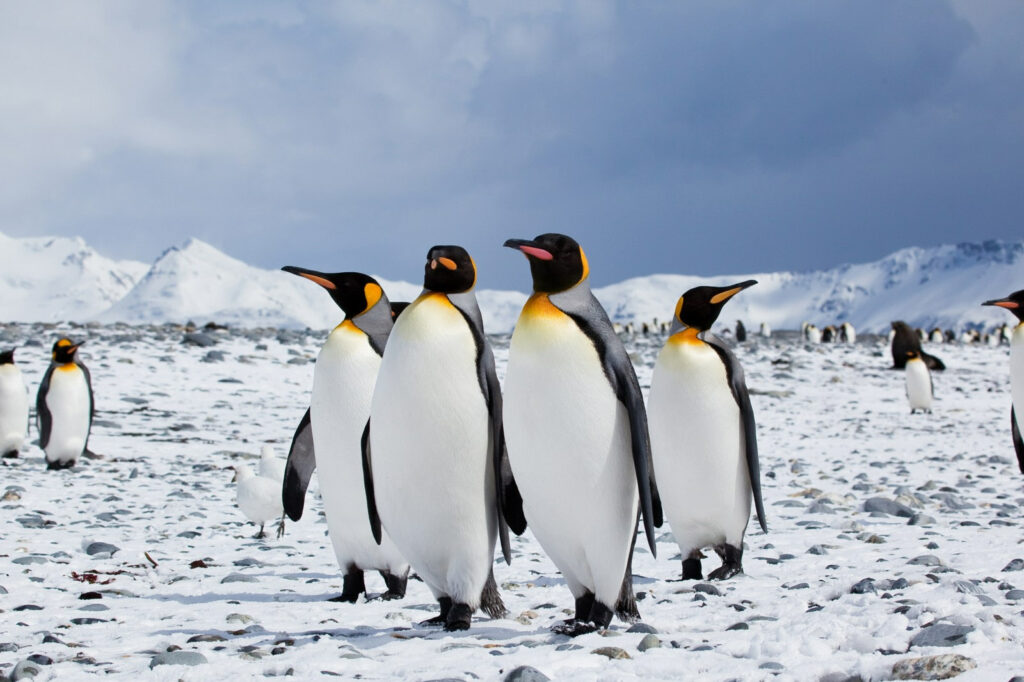It is difficult not to feel a twinge of regret combined with relief at the demise of the huge, flightless “terror birds“ that were the first apex predator to emerge after the mass extinction at the end of the Cretaceous 65 million years ago. But whether relief or regret predominates depends less on whether you are a small mammal trying to make a big move than whether you believe that climate was stable and benign until humans invented internal combustion engines, because what whacked these scary beasts standing as much as 7 feet tall with outsized beaks designed to smite, slay and rend all and sundry, and cleared the way for lions, tigers and bears to become your worst nightmare was… climate change.
This fascinating tale, and a great many others, remind us that the fixation on man-made CO2 as the driver of warm temperatures, bad storms and whatnot is extremely unscientific. (Including Scientific American deciding the asteroid theory doesn’t explain the other mass extinctions and, for good measure, not the one 65 million years ago either; in all cases CO2 was the mass murderer.) But the plain fact is that the planet was a lot warmer than it is today for most of the last half-billion years and the last 65 million as well, which helps explain why terror birds ruled the roost, and everything else, from the Americas and Europe to Africa and Antarctica (though oddly not Asia, then separated by oceans). But the temperature went up and down unpredictably, often suddenly, and CO2 had nothing to do with it. (As we noted last week, CO2 had nothing to do with the “hiatus” in temperature increase from 2000 to 2020 either.)
Somewhere around 40 to 45 million years ago two things apparently put the birds to lack of flight. First, the narrow sea between Asia and Europe closed, allowing the hyaenadontid mammalian predators that had evolved unmolested in the former to cross into the latter and tackle the birds in what, in nature red in tooth and claw, passes for a fair fight because, among other things, they were fast unlike the wee cowering timorous predators still clinging to the trees in Europe.
The other is that the frozen Bering land bridge melted, allowing the hyaenadontids into the Americas as well where, again, it turned out that four legs good, two legs bad. Though at this point we are going to say, yes, again, that the science is unsettled.
The Phorusrhacids, the South American branch of the terror birds, were between 3 and 10 feet tall, and lived from a time to another time. Perhaps 53 million BC to 100,000 BC. Or maybe they died out 1.8 million years ago. They lasted a lot longer than their kin elsewhere because South America was isolated from mammals until quite “recently” as geologists use that term, meaning 2.6 million years ago. And they seem to have had some success moving into North America after the Panama land bridge opened around the beginning of the Pleistocene “ice age”, unless the ones in North America were actually also part of that evolutionary “Family”. Some also reached Africa and Europe unless they didn’t.
Fascinating research continues. Including into whether there actually were “terror birds” in Asia and if so when and how they got there and why they didn’t stomp out mammalian competitors. And whether Diatryma is really Gastornis and the sort of stuff that causes table-shaking arguments at the right sort of conference. But research does not continue into the question whether the climate was stable until Henry Ford, or perhaps James Watt.
It’s perfectly clear that it wasn’t, because of vast geological forces we’d have had as much luck fighting as one of our six-inch-long ancestors would have had duking it out with Diatryma, if any. Indeed, when researchers take their eye off the climate panic ball they cheerfully write headlines like “The evolution of Asia’s mammals was dictated by ancient climate change and rising mountains”. And they tell you that the reason the Bering ice wall gave way was that:
“The Miocene Epoch, 23.03 to 5.3 million years ago, was a time of warmer global climates than those in the preceeding Oligocene or the following Pliocene and it’s notable in that two major ecosystems made their first appearances: kelp forests and grasslands. The first of the major periods of immigration via the Bering land connection between Siberia and Alaska occurred in the middle of the Miocene…”
Or blurt out that researcher Megan Mueller:
“explains the ‘Grande Coupure’ is a famous event at the end of the Eocene, 34 million years ago, when Asian mammals arrived in and essentially took over western Europe. ‘This faunal turnover is often attributed to the connection of landmasses due to the dramatic sea level drop from the growth of Antarctic ice sheets,’ she says.”
And nobody goes oh, was atmospheric CO2 falling dramatically so it got colder?
Some people say something superficially similar but actually quite worrisome:
“Cooling of Earth’s climate during the Cenozoic is broadly thought to have been related to decreasing atmospheric CO2 concentrations. The key factors leading to such decreases remain the subject of considerable debate.”
Note that in this formulation the conclusion, that CO2 did it, comes before any theory about how. You’re supposed to develop a hypothesis then test it, not develop a conclusion then look around for some plausible theory. But they know what they’re supposed to find and, if they don’t find it, they look harder, including fixing the proxy measures of CO2 so they do correspond with temperature when they didn’t before.
As this famous chart shows, to the extent that either set of proxies is sound, temperature and CO2 simply don’t correlate in any meaningful way. Including that yes, CO2 was declining at the end of the Eocene and, indeed, has been steadily since the Jurassic-Cretaceous boundary 144 million years ago. But temperature didn’t respond at all for 80 million years, which is rather a while, and then proceeded to drop, rebound and fall again while CO2 just kept seeping out. It’s not a causal factor anyone would take seriously were it not for current polemical pressures.



"Perhaps 53 million BC to 100,000 BC."
It's hilarious to see "BC" crop up in this context. The difference between "BC" and "years ago" in this context is smaller than a rounding error. If you love abbreviations, MYA is a good one: million years ago.